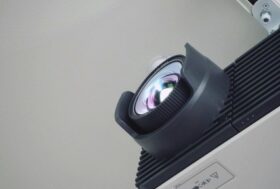Creative remote learning in science education

What’s the idea?
The current remote teaching situation means that teachers require new ways to demonstrate various principles, and creative methods are rewarding, efficacious and possibly essential.
What does the research say?
Science has a reputation as a supplier of rational rather than creative thinking, and it may be a surprise to find that incorporating creativity in science teaching has been recognised as the next step in developing science education (Kind and Kind, 2007). Scientific knowledge is built by interpreting new experiences and information, and creativity is similarly Piagetian (Schmidt, 2011). Hence, harnessing creative instincts not only helps learning but it develops techniques to address future problems in all contexts.
How does it work in practice?
The first step is to set out a framework. Most creative scientists are highly knowledgeable about their field and so introducing creativity into a lesson must rely on presenting relevant information and outlining the problem before engaging inventive thinking. The intent should fit one of Newton and Newton’s (2010) 3 Fields; with Field 1 covering development of creative explanations or hypotheses, Field 2 covering procedures to test hypotheses and Field 3 using scientific knowledge to solve a practical problem.
Teachers can then demonstrate the process by providing an example, before encouraging students to engage their own creative thinking. It is helpful to give guidance on how long to spend on the task – is it five minutes to come up with a quick example within a lesson or is it a homework task to come up with a more involved model or demonstration? Try to avoid suggesting a “presentation” as this will result in a lot of time spent online producing PowerPoints of varying quality and limited creativity. Make it clear what you want students to do but say as little as possible about how to do this, in order to encourage creative thinking around the task.
Once prepared, the author or group can show their ideas to the class, who may then take time to “test” them: Does it do what it claims to do? Can it be extended? Does it make predictions? Whilst this is going on, the teacher can use the accuracy of the creations to gauge the depth of understanding.
Sketches, diagrams and simple models are all that are needed. Perhaps the best approach is to ask for analogies to explain complex principles. This has the added advantage that few resources are needed, and the “idea” is instantly portable. In a personal favourite, a student used the analogy of guests entering a pair of connected rooms at a party to explain dynamic equilibria; this crisply explained effects of mass action, pressure and temperature, with the added benefit of another student extending the model to explain catalytic effects by varying the size of the connecting doors.
Top tips:
- The key is to provide opportunities for original thinking. Schmidt (2010) suggests problem solving, application of science to future environmental problems, original writing, creative inquiry, building and testing analogies and models, finding connections between apparently unrelated items and mystery solving.
- Hadzigeorgiou et al. (2012) provide useful advice to foster creativity but possibly the most important is to encourage imaginative and divergent thinking by greeting every idea with the same non-threatening and ridicule-free environment.
- The best part of all of this is that you cannot be wrong. Once this dawns on students, it creates a massive outflow of creative solutions and explanations. Introducing examples from the history of Science such as geocentrism, levity, luminiferous aether, Martian canals, spontaneous generation, the four humours and phlogiston certainly shows that imagination has a place in science.
Want to know more?
A useful place to start is: https://www.stem.org.uk/home-learning
- Hadzigeorgiou Y, Fokialis P and Kabouropoulou M (2012) Thinking about Creativity in Science Education. Creative Education 3(5): 603–611.
- Kind PM and Kind V (2007) Creativity in science education: Perspectives and challenges for developing school science. Studies in Science Education 43(1): 1–37.
- Newton LD and Newton DP (2010) What teachers see as creative incidents in elementary science lessons. International Journal of Science Education 32(15): 1989–2005.
- Schmidt AL (2010) The battle for creativity: Frontiers in science and science education. BioEssays 32(12): 1016–1019.
- Schmidt AL (2011) Creativity in Science: Tensions between Perception and Practice. Creative Education 2(5): 435–445.










